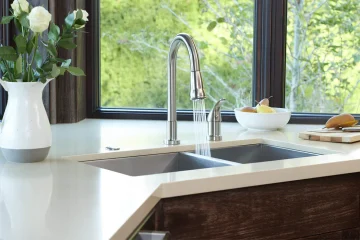When your home thermostat starts acting up, it can disrupt your comfort and energy efficiency. Honeywell thermostats are renowned for their reliability, but occasional glitches may require resetting to restore normal operation. We will explore the step-by-step process to reset your Honeywell home thermostat, ensuring you can troubleshoot common issues effectively.
Understanding the Need for Resetting
Before diving into the honeywell home thermostat troubleshooting process, it’s essential to understand why resetting your Honeywell thermostat may be necessary. Over time, electronic devices can encounter minor malfunctions due to power surges, programming errors, or even firmware glitches. Resetting allows the thermostat to revert to its default settings, often resolving these issues without professional intervention.
Identifying Your Honeywell Thermostat Model
The reset process can vary slightly depending on your specific Honeywell thermostat model. To ensure you follow the correct steps, identify your thermostat’s model number. This information is usually located on the device itself or in the product documentation provided by Honeywell. Once you have the model number, you can proceed confidently, knowing you’re addressing your thermostat’s unique configuration.
Step-by-Step Reset Instructions
1. Turn Off Your Thermostat:
Begin by turning off your Honeywell thermostat. Locate the power switch, usually positioned near the bottom of the thermostat or accessible through the device menu if it’s a touchscreen model. Ensure the thermostat display is completely off before proceeding to the next step.
2. Remove the Thermostat from Its Base:
Depending on the model, your thermostat may need to be detached from its wall base to access the reset button. Pull the thermostat away from the wall or unscrew it from the mounting plate to reveal the reset button. This button is typically small and may require a paperclip or similar tool.
3. Press and Hold the Reset Button:
Using a paperclip or similar tool, press and hold the reset button for at least five seconds. This action resets the thermostat to its factory default settings. During this process, you may notice the display flickering or briefly turning off and back on, which is normal.
4. Reattach the Thermostat to Its Base:
Once the reset is complete, reattach the thermostat to its wall base or mounting plate. Ensure it clicks securely into place to restore power and connection to your HVAC system.
5. Reconfigure Your Settings:
After resetting, your Honeywell thermostat will revert to its default settings. You’ll need to reconfigure your preferred temperature settings, programming schedules, and any other customized options you had previously set. Refer to your thermostat’s user manual for navigating the menu and programming features.
Testing Your Thermostat
After completing the reset and reconfiguration process, it’s essential to test your thermostat to ensure it’s functioning correctly. Adjust the temperature settings and observe how the thermostat responds. Verify that it accurately controls your heating or cooling system and displays the correct temperature readings. If you notice any ongoing issues or irregularities, consult Honeywell’s troubleshooting guide or contact customer support for further assistance.
Maintaining Your Thermostat
Regular maintenance of your Honeywell thermostat can prevent the need for frequent resets and extend its lifespan. Ensure the thermostat and its surrounding area are free from dust and debris, as these can interfere with sensors and buttons. Periodically check the battery level to see if your thermostat is battery-powered, replacing them as needed to prevent unexpected shutdowns. Keep the thermostat updated with the latest firmware if updates are available from Honeywell. This proactive approach reduces the likelihood of software-related issues that may require resetting.
Troubleshooting Common Issues
While resetting can resolve many thermostat problems, some issues may persist or reoccur. If your thermostat continues to malfunction after resetting, consider troubleshooting common issues like wiring problems, faulty sensors, or connectivity issues with your HVAC system. Ensure all wires are securely connected to the thermostat terminals with no visible signs of damage. Clean the sensors and ensure they are not obstructed by objects that could affect their readings. Checking the thermostat’s compatibility with your HVAC system specifications can also prevent operational issues.
When to Seek Professional Help
If troubleshooting and resetting do not resolve your thermostat issues, it may be time to seek professional assistance. Certified HVAC technicians have the expertise and tools to diagnose and repair more complex problems with your thermostat or HVAC system. They can inspect thoroughly, identify underlying issues, and recommend appropriate solutions to restore optimal functionality. Professional maintenance at regular intervals can also prevent potential problems and ensure your thermostat operates efficiently year-round, contributing to both comfort and energy savings in your home.
Resetting your Honeywell home thermostat can resolve unresponsiveness or incorrect temperature readings. Following the step-by-step instructions tailored to your thermostat model, you can effectively troubleshoot and restore regular operation without professional help. Remember to document your customized settings after reconfiguration to maintain optimal comfort and energy efficiency in your home. Maintaining your thermostat ensures it continues to provide reliable temperature control for years to come.




